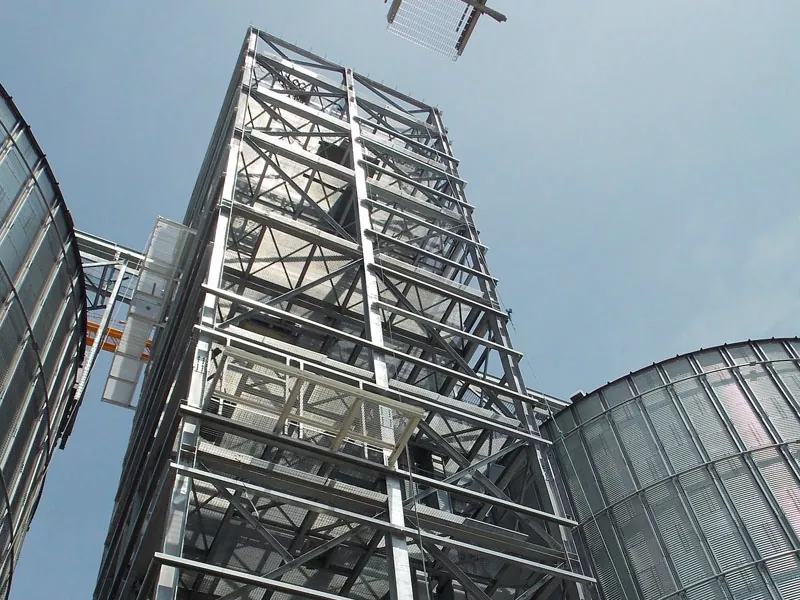QR Code


Steel structure towers have many benefits. They are strong, durable, and long-lasting. They are also lightweight and can be assembled quickly and easily. In addition, they require very little maintenance and are resistant to rust and corrosion.
Steel structure towers are used in many applications, such as:
There are several types of steel structure towers, including:
In conclusion, steel structure towers play a vital role in modern infrastructure. They are used to support heavy loads and are built to withstand harsh environmental conditions. Steel structure towers have many benefits over other types of construction, including strength, durability, and ease of assembly. If you are interested in learning more about steel structure towers and how they can be used in your project, contact Qingdao Eihe Steel Structure Group Co., Ltd. at qdehss@gmail.com or visit their website at https://www.ehsteelstructure.com.
1. T. Matsui, et al. (2019). Analysis of Vibration Reduction of Steel Frame with Steel Damping Wall under Seismic Load, Journal of Structural and Construction Engineering.
2. J. Wang, et al. (2017). Behavior of Bolted Flange Connections Subjected to Combined Loads of Shear and Tension, Journal of Structural Engineering.
3. K. M. Fakharifar, et al. (2018). Investigation on the Progressive Damage of Fiber-Metal Laminate Single-Lap Joints, Journal of Aerospace Engineering.
4. P. P. Lin, et al. (2019). Steel-reinforced Submarine Propeller Band-shaped Beam Structure with High Strength and High Fatigue Characteristics, Journal of Materials Engineering and Performance.
5. A. J. Pletser, et al. (2020). Natural Frequencies and Mode Shapes of Pedestal Crane Structures, Journal of Vibration Engineering and Technologies.
6. S. Q. Huang, et al. (2017). Behavior of Beam-to-Column Bolted Stiffened End Plate Connections under Cyclic Loadings, Journal of Structural Engineering.
7. N. C. Guidotti, et al. (2019). A Numerical Study of the Behavior of Steel Columns with Circular Hollow Section under Axial Loads, Journal of Earthquake Engineering.
8. S. Sharma, et al. (2017). Numerical Modeling of Mechanical Behavior of Bolted Joint under Dynamic Loading, Journal of Structural Integrity and Maintenance.
9. L. F. Xue, et al. (2018). Fatigue Behaviour of Steel–Plywood Hybrid Structural Components with Different Connection Types, Journal of Materials Science Research.
10. M. S. Islam, et al. (2019). Incorporation of Multi-objective Genetic Algorithm for Optimum Design of a Steel Space Frame Tower Stiffened by Web-panel, Structural Engineering and Mechanics.

Copyright © 2024 Qingdao Eihe Steel Structure Group Co., Ltd. All Rights Reserved.
Links | Sitemap | RSS | XML | Privacy Policy |
TradeManager
Skype
VKontakte
